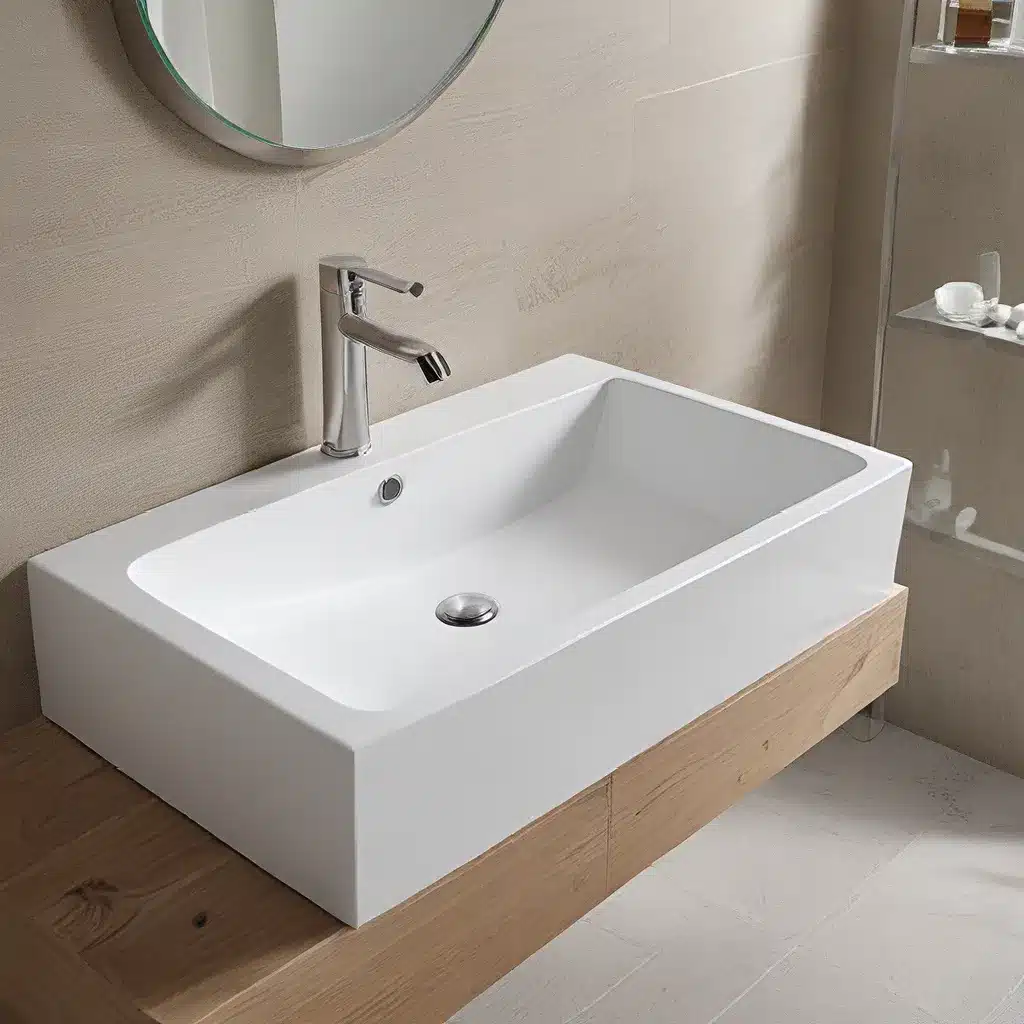
In today’s era of environmental consciousness, the importance of energy-efficient and water-saving home appliances has become increasingly paramount. This is especially true when it comes to bathroom fixtures, where simple upgrades can have a profound impact on both your utility bills and the planet’s precious resources. As the focal point of any bathroom, the humble washbasin deserves special attention, and sustainable sink designs are leading the way in this eco-friendly revolution.
Maximizing Water Efficiency with WaterSense Labeled Faucets
One of the most effective ways to enhance the sustainability of your bathroom is by investing in WaterSense labeled faucets and accessories. This certification, awarded by the U.S. Environmental Protection Agency (EPA), ensures that these products meet strict criteria for water efficiency and performance.
WaterSense labeled bathroom sink faucets and accessories, such as aerators, are designed to use a maximum of 1.5 gallons per minute (GPM) – a significant reduction from the industry standard of 2.2 GPM. This 30% decrease in water flow can translate to substantial savings both in terms of water consumption and the associated energy costs required to heat that water.
For the average family, upgrading to WaterSense labeled fixtures can save up to 700 gallons of water per year – the equivalent of taking 45 showers. By reducing demands on water heaters, these energy-efficient sinks also contribute to a household’s overall energy savings, with the potential to power a hairdryer for 17 minutes per day over the course of a year.
Exploring Sustainable Materials for Washbasins
In addition to water efficiency, the materials used in washbasin construction play a crucial role in a fixture’s environmental impact and long-term performance. From classic porcelain to innovative engineered stone, each material offers unique benefits that homeowners and designers should consider.
Porcelain Washbasins
Porcelain has long been a popular choice for washbasins, prized for its durability, easy maintenance, and timeless aesthetic. Crafted from a blend of clay, feldspar, and quartz, porcelain sinks are highly resistant to stains, scratches, and heat, ensuring a long lifespan. Additionally, porcelain is a non-porous material, making it a hygienic option that inhibits the growth of mold and bacteria.
Natural Stone Washbasins
For those seeking a more distinctive and luxurious look, natural stone washbasins such as marble and granite offer a stunning alternative. These materials not only enhance the visual appeal of a bathroom but also provide exceptional durability and resistance to wear and tear. However, it’s important to note that natural stone may require more specialized care and maintenance to preserve its pristine appearance.
Engineered Stone Washbasins
Emerging as a popular choice, engineered stone washbasins combine the beauty of natural materials with enhanced performance and sustainability. These sinks are crafted from a blend of quartz, resins, and pigments, resulting in a highly durable and scratch-resistant surface that is easy to clean and maintain. Engineered stone also boasts a lower environmental impact compared to some natural stone options, as it often incorporates recycled materials in its composition.
| Material | Sustainability | Durability | Maintenance |
|---|---|---|---|
| Porcelain | Medium | High | Easy |
| Natural Stone (Marble, Granite) | Low | High | Moderate |
| Engineered Stone | High | High | Easy |
Designing for Lifetime Value
When it comes to choosing a sustainable washbasin, the initial cost is just one factor to consider. Equally important is the long-term value and environmental impact of the fixture over its lifetime. This is where the concept of lifetime value comes into play, taking into account not only the upfront investment but also the ongoing maintenance, energy and water savings, and the potential for the product to be repaired or even recycled at the end of its useful life.
Sustainable design principles, such as modular construction and user-friendly maintenance, can further enhance the lifetime value of washbasins. Features like accessible cartridges and easy-to-clean surfaces can simplify the maintenance process, reducing the need for costly repairs or replacements down the line.
Proper Installation and Maintenance for Lasting Performance
Maximizing the benefits of an energy-efficient washbasin goes beyond just selecting the right product – proper installation and ongoing maintenance are also critical for long-term success. Enlisting the services of a skilled plumber can ensure that your new fixture is installed correctly, optimizing its water efficiency and preventing any potential leaks or other issues.
Regular maintenance, such as cleaning the aerator and checking for worn or damaged parts, can also extend the lifespan of your washbasin. Addressing minor problems promptly can help you avoid more significant and costly repairs in the future, further contributing to the overall sustainability of your bathroom.
Embracing the Sustainable Future of Bathroom Fixtures
As homeowners, designers, and contractors, we all have a role to play in promoting the widespread adoption of energy-efficient and water-saving bathroom fixtures. By choosing sustainable washbasins and embracing the latest advancements in water conservation technology, we can make a tangible difference in our personal water and energy usage, as well as the long-term environmental impact of our homes.
Remember, every drop counts when it comes to preserving our planet’s precious resources. By taking the time to research, invest in, and properly maintain your washbasin, you’re not only enhancing the functionality and aesthetic appeal of your bathroom – you’re also contributing to a more sustainable future for us all.
To explore the wide range of energy-efficient and environmentally friendly washbasin options available, be sure to visit washbasinfactory.com – your one-stop destination for all your sustainable bathroom needs.

